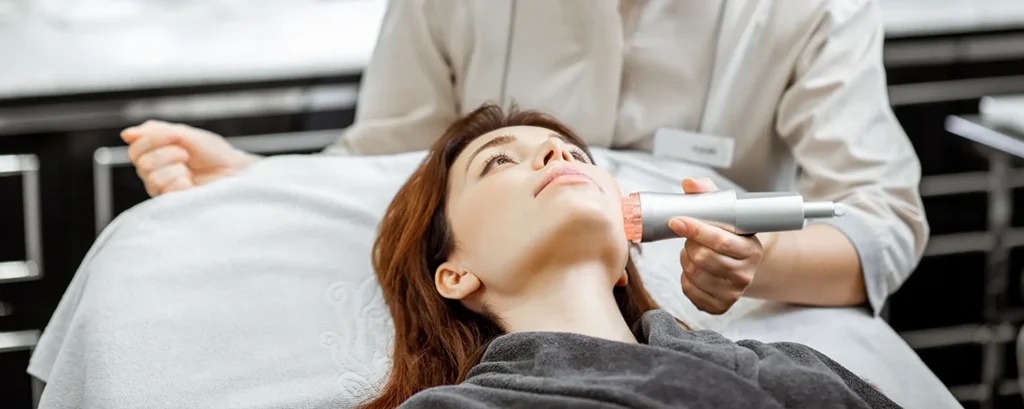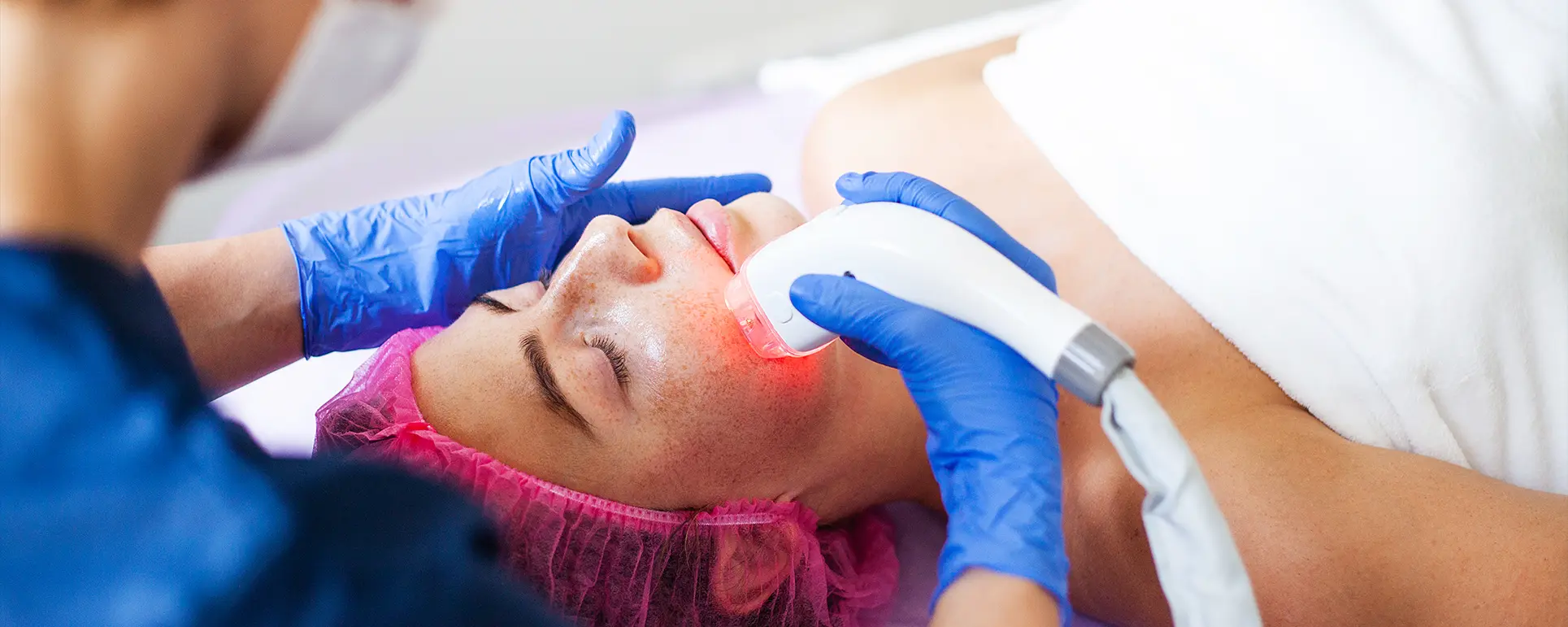Thermage is one of the most popular non-surgical skin-tightening treatments available today. It uses radiofrequency energy to stimulate collagen production, tighten skin, and improve contours, making it a favourite among patients seeking subtle, natural results without surgery.
However, like any cosmetic procedure, Thermage treatment in London has potential downsides. While generally safe, there are factors you should consider before committing, including side effects, discomfort during treatment, costs, and situations where alternative treatments might be more suitable.
In this guide, I’ll explore the limitations and potential drawbacks of Thermage so you can make an informed decision about whether it’s right for you.
Understanding Thermage
If you’re considering a non-surgical way to tighten your skin, Thermage could be an option for you. This treatment works by sending radiofrequency (RF) energy deep into your skin while keeping the surface safe and protected. What does that mean for you? Essentially, the energy helps to:
- Stimulate new collagen production: Over time, this can make your skin feel firmer and look more youthful.
- Remodel existing collagen: It helps improve the structure and elasticity of your skin that’s already there.
- Tighten loose or sagging areas: You may notice smoother contours, especially around the jawline, eyes, or other problem areas.
One of the biggest benefits for you is that Thermage is non-invasive, so there’s little to no downtime. You can usually get back to your normal activities right away. Plus, the results appear gradually over several months, giving your skin a natural, lifted look rather than an instant, sometimes dramatic change.
That said, it’s important to have realistic expectations. While Thermage can help improve skin firmness, it’s not a substitute for surgical procedures if you have significant sagging. Some people may also experience temporary redness, swelling, or mild discomfort during or after treatment. Understanding both the benefits and limitations will help you decide whether Thermage is the right choice for your skin goals.
Common Downsides of Thermage

While Thermage is a popular non-surgical option for tightening and lifting your skin, it’s important for you to understand the potential downsides before committing to treatment. Being aware of these can help you make an informed decision and set realistic expectations.
1. Mild Discomfort During Treatment
Even though Thermage is non-surgical, you might still experience some discomfort while the procedure is happening. Many people report:
- A warming or tingling sensation as the RF energy penetrates your skin
- Mild prickling or pinching in the areas being treated
- Temporary sensitivity afterward
Pain tolerance differs from person to person. Some clinics offer topical anaesthetics or cooling devices to reduce discomfort, but it’s worth knowing that the procedure is rarely completely pain-free. Being prepared for a little discomfort can make the experience more manageable and less surprising.
2. Temporary Side Effects
Most side effects from Thermage are mild and short-lived, but it’s still important for you to be aware of them:
- Redness and swelling, which can last anywhere from a few hours to a couple of days
- Minor tingling, numbness, or tenderness in treated areas
- Rarely, blistering or bruising, especially if you have sensitive skin
- A feeling of warmth in your skin immediately after the treatment
These effects typically resolve on their own, but knowing what to expect can help you plan your schedule around treatment and avoid unexpected downtime.
3. Variable Results
It’s important to remember that results are not guaranteed and can differ from person to person. Your outcome may depend on factors such as:
- Your skin type and natural elasticity
- Age and how your body produces collagen
- The severity of your sagging or loose skin
- The area being treated
Thermage tends to work best for mild to moderate sagging. If you have significant loose skin or advanced signs of aging, you might not see dramatic improvement. Having realistic expectations is key to feeling satisfied with the results.
4. Gradual and Subtle Results
Unlike a surgical facelift, Thermage doesn’t provide instant, dramatic changes. You may notice:
- Some immediate tightening right after the procedure
- Continued improvement over the next 2–6 months as your collagen remodels and strengthens
This slow progression can be a downside if you’re looking for quick, noticeable results. You’ll need patience and a willingness to follow up as recommended to see the full benefits.
5. Cost Considerations
Thermage is a premium cosmetic treatment, and the cost can be a factor you’ll want to consider carefully:
- The price varies depending on the area being treated, the clinic’s reputation, and where you live
- Some people may require multiple sessions or occasional touch-ups to maintain results
- If you’re expecting surgical-level results, the high cost may not be worth it
Investing in Thermage is something to weigh carefully you’ll want to balance the long-term benefits against the financial commitment.
6. Not Permanent
It’s important for you to understand that Thermage is not a permanent solution. While the treatment stimulates collagen and helps tighten skin, aging naturally continues:
- Your skin may gradually return to its previous laxity over time
- Maintenance treatments are recommended to prolong results
- Typically, results last between 12–24 months, depending on your skin quality, lifestyle, and age
Knowing that Thermage won’t stop aging will help you plan for future maintenance and set realistic expectations.
7. Limitations on Severe Laxity
Thermage has its limits, especially if you have significant sagging or excess skin:
- Surgical lifts, like facelifts, may provide more dramatic results in these cases
- Thermage is most effective for mild to moderate skin laxity
- It’s worth discussing your goals with your dermatologist to see if Thermage will give you noticeable improvement or if another procedure would be more suitable
Being honest with yourself about what you want and what Thermage can realistically deliver is the best way to avoid disappointment and ensure your treatment matches your expectations.
Who Might Not Be Suitable for Thermage

While Thermage can be a great option for many people, it’s not right for everyone. Knowing whether you’re a suitable candidate can help you avoid complications and make the most of your treatment.
You might not be ideal for Thermage if you have:
- Severe skin laxity or extensive sagging: If your skin is very loose, Thermage may not provide the dramatic lift you’re hoping for. Surgical options might be a better fit.
- Pregnancy or breastfeeding: To keep both you and your baby safe, it’s generally advised to wait until after pregnancy and breastfeeding before considering RF treatments.
- Certain skin conditions: Active rashes, eczema, infections, or open wounds in the area you want treated can increase your risk of irritation or complications.
- Pacemakers or electrical implants: Because Thermage uses radiofrequency energy, you should consult a specialist to determine whether the treatment is safe for you.
Before you go ahead, a professional assessment is essential. This helps ensure the procedure is safe for your unique situation and that you choose the treatment that will best meet your skin goals. By discussing your medical history and expectations, you and your dermatologist can decide whether Thermage is the right choice or if another option would give you better results.
Comparing Thermage to Other Skin-Tightening Options
If you’re considering skin tightening or lifting treatments, it helps to know what’s available and what each option can do for you:
Thermage is non-invasive and works gradually to tighten your skin. You’ll notice subtle improvements over time, and there’s minimal downtime, so you can usually get back to your routine right away. It’s best if you have mild to moderate sagging and want a non-surgical lift that lasts around 12–24 months.
Ultherapy is another non-surgical option that lifts and firms your skin gradually. Like Thermage, downtime is minimal, though you might experience slight redness or swelling. It’s particularly effective for improving laxity in your face or neck, and results typically last 12–18 months.
Laser skin tightening offers mild improvement in firmness and skin texture. It’s non-invasive, with little to no interruption to your daily life, and works best if you’re looking to improve skin texture or address mild sagging. Results usually last 6–12 months.
Facelifts, on the other hand, are surgical. They provide dramatic, immediate results, but you’ll need weeks to recover. A facelift is ideal if you have severe sagging or excess skin and want a long-lasting result that can last for years.
Knowing the differences can help you decide which treatment matches your goals, your tolerance for downtime, and how dramatic a change you’re looking for.
Managing Expectations
If you’re considering Thermage, it’s really important to set realistic expectations so you’re satisfied with the results. Here’s what you should keep in mind:
- Results are gradual and subtle: You might notice some tightening immediately after treatment, but the full effect develops slowly over the next few months as your collagen remodels.
- Improvements won’t be as dramatic as surgery: Thermage can help lift and firm your skin, but it won’t give you the instant, dramatic change that a surgical facelift would.
- Follow-up treatments or complementary procedures can help: Sometimes, one session isn’t enough to achieve your ideal result. Touch-ups or combining Thermage with other non-invasive treatments can enhance the overall effect.
By understanding what Thermage can and can’t do for you, you’re more likely to feel pleased with your results and avoid disappointment. Approaching the treatment with realistic expectations allows you to enjoy the gradual improvements and maintain your skin’s health over time.
Tips to Minimise Discomfort and Maximise Safety
If you want your Thermage experience to be as comfortable and effective as possible, there are a few key steps you can take:
- Choose a qualified provider: Make sure you see a dermatologist or trained professional with experience in Thermage procedures. This can make a big difference in both your comfort during treatment and the results you get.
- Follow pre-treatment instructions: Your provider may ask you to avoid certain medications, supplements, or skincare products before your session. Doing so helps reduce the risk of side effects and ensures your skin is ready for treatment.
- Use numbing agents or cooling devices if recommended: Some clinics provide topical anaesthetics or cooling systems to make the procedure more comfortable. Don’t hesitate to ask these can make a noticeable difference.
- Protect your skin afterward: Avoid sun exposure, harsh skincare products, or irritants for a few days after treatment. This helps your skin recover smoothly and prevents complications.
- Keep up with follow-up and maintenance sessions: Your dermatologist may recommend touch-ups or maintenance treatments to maintain and enhance your results over time.
By taking these steps, you can minimise discomfort, reduce the likelihood of side effects, and get the most out of your Thermage treatment. Proper preparation and follow-up are key to keeping your skin safe and achieving the best possible outcome.
Frequently Asked Questions About Thermage:
1. How does Thermage actually work on my skin?
Thermage uses radiofrequency energy to reach deep into your skin while keeping the surface safe. This energy gently heats the underlying tissue, which stimulates your body to produce new collagen and remodel existing collagen. Over time, this process helps tighten and firm your skin, giving you a more lifted and contoured appearance. The changes are gradual, so you’ll notice improvements slowly over a few months rather than immediately.
2. Will the treatment be painful?
Most people describe Thermage as mildly uncomfortable rather than painful. You may feel a warming or tingling sensation as the radiofrequency energy penetrates your skin, and some areas can feel prickly or pinched. Everyone’s pain tolerance is different, so what feels minor to one person may be more noticeable to another. Many clinics use cooling devices or topical numbing creams to make the experience more comfortable, but it’s rarely completely pain-free.
3. How long does a Thermage session take?
The duration of your session depends on the area being treated. Smaller areas like around the eyes can take less than an hour, while full-face or larger body areas may take 90 minutes or longer. Your provider will discuss the estimated time with you during your consultation so you can plan your day accordingly.
4. When will I see results?
You might notice some immediate tightening right after treatment, but the full effects develop gradually as your collagen remodels. Most people see continued improvement over two to six months. Because the results are subtle and natural-looking, it’s important to be patient and understand that the process is not instantaneous like a surgical facelift.
5. Are there any side effects I should expect?
Side effects from Thermage are usually mild and short-lived. You may experience temporary redness, swelling, warmth, or minor tenderness in the treated area. In rare cases, people with sensitive skin may notice bruising or blistering. These effects generally resolve on their own, but knowing what to expect helps you plan your schedule and avoid surprises.
6. How long do the results last?
The longevity of your results depends on factors such as your age, skin type, lifestyle, and how your body produces collagen. Typically, you can expect results to last between 12 and 24 months. Because aging continues naturally, maintenance treatments may be recommended to prolong the effects and keep your skin looking firmer for longer.
7. Can anyone get Thermage, or are there restrictions?
Not everyone is a suitable candidate for Thermage. It tends to work best if you have mild to moderate sagging. If your skin has severe laxity or you have excess skin, surgical options may give better results. Pregnant or breastfeeding women are usually advised to wait, and those with certain skin conditions, active rashes, or implants like pacemakers should consult a specialist first to ensure safety.
8. How does Thermage compare to other skin-tightening treatments?
Thermage is non-invasive and provides subtle, gradual improvements with minimal downtime. Ultherapy is another non-surgical option that lifts and firms the skin gradually, while laser skin tightening improves firmness and texture, mostly for mild sagging. If you’re looking for immediate and dramatic results, a surgical facelift might be more appropriate. The right choice depends on your skin concerns, your tolerance for downtime, and the level of change you’re hoping to achieve.
9. Will I need multiple treatments?
Some people achieve their desired result after just one session, while others may benefit from follow-ups or touch-ups. Your provider will assess your skin and suggest the best approach to achieve optimal results. Regular maintenance sessions can also help you preserve the improvements you’ve gained from the initial treatment.
10. How should I care for my skin before and after Thermage?
Proper preparation and aftercare can make a big difference. Before treatment, your provider may ask you to avoid certain medications, supplements, or skincare products that could increase sensitivity. Afterward, it’s important to protect your skin from sun exposure and avoid harsh or irritating products for a few days. Following your provider’s instructions and attending recommended follow-up sessions will help you minimise side effects and get the most from your Thermage treatment.
Final Thoughts: Understanding the Downsides of Thermage
Thermage can be an effective, non-surgical way to improve skin firmness and achieve a subtle lift, but it’s important to go in with realistic expectations. Results are gradual, costs can be significant, and mild discomfort or temporary side effects are possible. By understanding the potential limitations and knowing whether you’re an ideal candidate, you can make a more informed decision and enjoy the benefits of the treatment safely.
If you’re curious about how Thermage could fit into your skincare journey, speaking with a qualified professional is the best way to find out. For personalised guidance and to explore whether it’s right for your skin, If you’re considering Thermage treatment in London, you can get in touch with us at the London Dermatology Centre to see how it can work for you. Our specialists can help you understand what to expect, how to maximise results, and ensure the treatment is tailored to your needs.
References:
1. Burns, J.A., 2005. Thermage: Monopolar radiofrequency. Aesthetic Surgery Journal, 25(6), pp.638–639. Available at: https://academic.oup.com/asj/article/25/6/638/189021
2. Chen, X., 2024. Achieving the minimum pain experience by buccal nerve block and superficial cervical plexus block during Thermage treatment. Journal of Cosmetic Dermatology. Available at: https://onlinelibrary.wiley.com/doi/10.1111/jocd.16025
3. Suh, D.H., 2020. A survey on monopolar radiofrequency treatment: The practice patterns and side effects among Korean dermatologists. Dermatologic Therapy, 33(6), e14284. Available at: https://onlinelibrary.wiley.com/doi/10.1111/dth.14284
4. Park, S., 2025. Short‐ and long‐term effects of adding topical cosmetics to Thermage treatment. Journal of Cosmetic Dermatology. Available at: https://pmc.ncbi.nlm.nih.gov/articles/PMC12050410/
5. Gold, M.H., 2010. Update on tissue tightening. Journal of Drugs in Dermatology, 9(6), pp. 639–644. Available at: https://pmc.ncbi.nlm.nih.gov/articles/PMC2922712/
